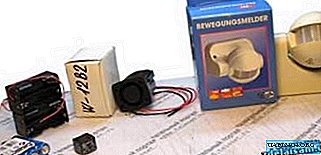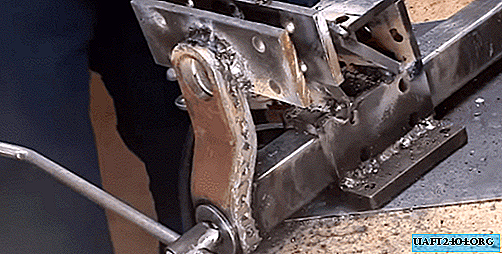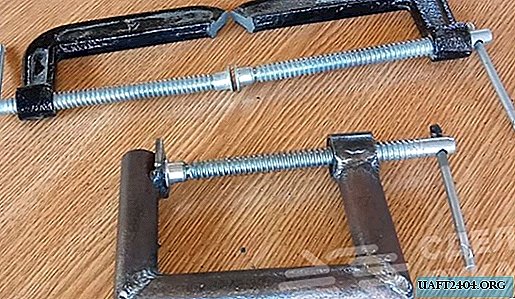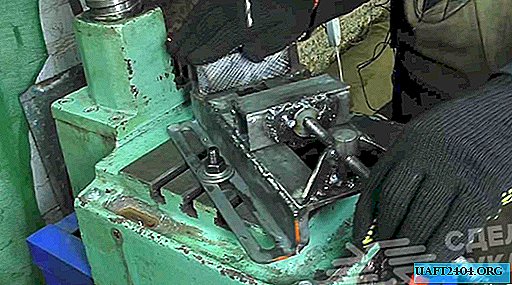Share
Pin
Tweet
Send
Share
Send
What do we need from an alarm?
- Reaction to an invasion, e.g. passive IR motion sensor
- Alert for siren intrusion. The notification should work for a short time (for example 5 minutes) and then turn off.
- After operation, the system should again go into standby mode. If necessary, it should operate repeatedly.
- low consumption current for long-term (6 months) standby operation.
To make such an alarm we need:

Passive infrared motion sensor. For example, in a sensor purchased in OBI - a light switch. The price is about 300 rubles.
The siren is 12 V. In particular, the model was used at 105dB, you can use any other. Price no more than 200 rub.
Other trifle: Battery holder, 6 V relay, insulating tubes, wires.
So. We need to redo the motion sensor, translating it from 220V to 12V. A superficial analysis of the circuit showed that the circuit can operate at power voltages from 7-8 V to 30 V. With a 12 V power supply, it is necessary to install a relay at 6 V. (12 volt does not work). Let's open the sensor. The spherical part is removed if one of the supports is bent. Halves are latched.
The siren is 12 V. In particular, the model was used at 105dB, you can use any other. Price no more than 200 rub.
Other trifle: Battery holder, 6 V relay, insulating tubes, wires.
So. We need to redo the motion sensor, translating it from 220V to 12V. A superficial analysis of the circuit showed that the circuit can operate at power voltages from 7-8 V to 30 V. With a 12 V power supply, it is necessary to install a relay at 6 V. (12 volt does not work). Let's open the sensor. The spherical part is removed if one of the supports is bent. Halves are latched.

We remove the board. As you can see, the sensor is a passive IR receiver that responds to a change in the value of IR radiation of an incident and simple optical system. The viewing angle of the sensor is 180 degrees.

To the points on the left you need to apply power. On the "+" positive pole and on the "-" negative from the power source. To the points on the right, we will connect the relay coil. Dismantle the standard relay (black box).

Due to the lack of space inside the spherical part of the sensor through the wires, it was decided to bring the relay to the base of the housing.
The switch supplies power to the sensor. When the sensor is triggered, it supplies voltage to the relay coil. The relay is triggered and will activate a siren with its make contacts. Thanks to the relay, you can connect a large number of sirens.
The switch supplies power to the sensor. When the sensor is triggered, it supplies voltage to the relay coil. The relay is triggered and will activate a siren with its make contacts. Thanks to the relay, you can connect a large number of sirens.

View from below. Siren and batteries are connected via terminals. The bottom left is a relay. Above right switch.


The system is complete. ATTENTION! Do not turn on the siren without protecting your ears, despite its small size, it is very loud and can cause hearing damage.
As a result, it turned out. In accordance with the regulator on the sensor, you can set the operating time of the siren after operation. 10 sec to 8 min Install the sensor indoors and bring the siren to the street. Unfortunately, after the power supply, the sensor is triggered, so it is reasonable to bring the siren switch to a secret place and turn it on 5 minutes after the sensor is turned on. The switch can be switched with a key, like a car ignition lock.
The sensor turned out quite economical. Judging by the ammeter:
Standby Current 700 μA
Trip Current 1.1 mA
Siren Current 200mA
A simple calculation suggests that for work within 6 months you need 3.1 Ah *. The alkaline battery capacity is about 2.5 A * h. Therefore, for the winter you need 16 alkaline batteries connected mixed.
Check in the freezer showed that the system works even at -32
Added later: given our turbulent times and the autonomy of the system, it can be used to erect a security perimeter in nature around the tent, for example.
Tests at the cottage showed:
1. Glare from the water cause a false positive
2. With the help of the cut-off lines, the sensor can be sealed so that blind spots are formed.
As a result, it turned out. In accordance with the regulator on the sensor, you can set the operating time of the siren after operation. 10 sec to 8 min Install the sensor indoors and bring the siren to the street. Unfortunately, after the power supply, the sensor is triggered, so it is reasonable to bring the siren switch to a secret place and turn it on 5 minutes after the sensor is turned on. The switch can be switched with a key, like a car ignition lock.
The sensor turned out quite economical. Judging by the ammeter:
Standby Current 700 μA
Trip Current 1.1 mA
Siren Current 200mA
A simple calculation suggests that for work within 6 months you need 3.1 Ah *. The alkaline battery capacity is about 2.5 A * h. Therefore, for the winter you need 16 alkaline batteries connected mixed.
Check in the freezer showed that the system works even at -32
Added later: given our turbulent times and the autonomy of the system, it can be used to erect a security perimeter in nature around the tent, for example.
Tests at the cottage showed:
1. Glare from the water cause a false positive
2. With the help of the cut-off lines, the sensor can be sealed so that blind spots are formed.
Share
Pin
Tweet
Send
Share
Send










